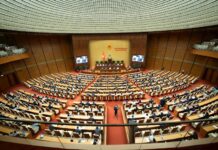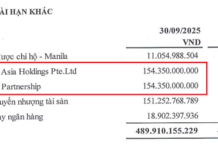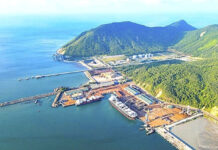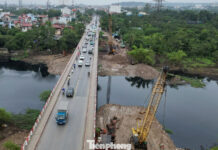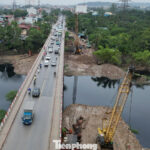The Ministry of Construction recently issued a dispatch to the People’s Committee of Can Tho City, addressing proposals for the early investment and upgrade of facilities at Can Tho International Airport.
According to the Ministry of Construction, the current infrastructure of Can Tho International Airport includes a 3,000 m x 45 m runway, 10 aircraft parking positions capable of handling aircraft such as B747, B777, A320, A321, and similar models, and a passenger terminal with a capacity of approximately 3 million passengers annually.
In terms of operations, passenger traffic at Can Tho Airport from 2019 to 2023 averaged between 1 and 1.4 million passengers per year. In 2024, the airport served 1.035 million passengers, and in the first nine months of 2025, it handled approximately 0.8 million passengers.
Thus, the current infrastructure of Can Tho International Airport adequately meets the air transport needs of the region and the Mekong Delta, supporting local and regional socio-economic development.

The Ministry of Construction proposes a VND 2,661 billion investment to upgrade Can Tho Airport.
Under the master plan for the development of the national airport system for the 2021-2030 period, with a vision to 2050, Can Tho International Airport is classified as a 4E airport. By 2030, it is expected to handle 7 million passengers annually, and by 2050, this number is projected to reach 12 million passengers per year.
To implement the plan, the Ministry of Construction has approved the outline and tasks for developing the master plan for Can Tho International Airport for the 2021-2030 period, with a vision to 2050, and has assigned the Vietnam Aviation Administration as the planning authority.
The Ministry of Construction requests the People’s Committee of Can Tho City to direct relevant units to collaborate with the Vietnam Aviation Administration during the planning process, ensuring alignment with the city’s and region’s socio-economic development goals, to serve as a basis for investment.
Regarding the development of Can Tho Airport, the Ministry of Construction has proposed a funding requirement of approximately VND 2,661 billion in the 2026-2030 medium-term public investment plan. This funding is intended for upgrading the existing runway, constructing a parallel taxiway, and developing a synchronized taxiway system to enhance the airport’s operational capacity.
Based on the capital allocated by the National Assembly and the Government, the Ministry of Construction will determine the list of investment projects for the 2026-2030 period, ensuring alignment with available funds and criteria approved by competent authorities.
For other essential infrastructure, the Ministry of Construction notes that the airport enterprise (Vietnam Airports Corporation) is responsible for investment.
Regarding aviation and non-aviation service facilities at the airport, the Ministry of Construction states that, according to the draft Civil Aviation Law of Vietnam currently under review by the National Assembly at its 10th session (15th term), airport enterprises will be responsible for investing in these facilities.
“The Ministry of Construction requests the People’s Committee of Can Tho City to direct relevant units to collaborate with Can Tho Airport Enterprise in studying the needs and investment plans for the remaining facilities, aviation services, and non-aviation services, ensuring alignment with air transport demands and local socio-economic development.”
“Countdown to a Landmark Event: 198 Projects Set to Unveil in Less Than a Month”
The Prime Minister’s directive urges swift preparations for the inauguration and groundbreaking ceremonies of large-scale, significant projects and works, commemorating the 14th National Congress of the Communist Party of Vietnam.
Proposed Policy to Support Citizens in Adopting Green Transportation by January 31, 2026
Vice Prime Minister Trần Hồng Hà has tasked the Ministry of Construction with leading a collaborative effort alongside relevant ministries, agencies, and the People’s Committees of Hanoi and Ho Chi Minh City. Their mission is to consult experts, scientists, and draw on the experiences of advanced nations in developing public transportation systems and promoting the use of eco-friendly vehicles among citizens.







